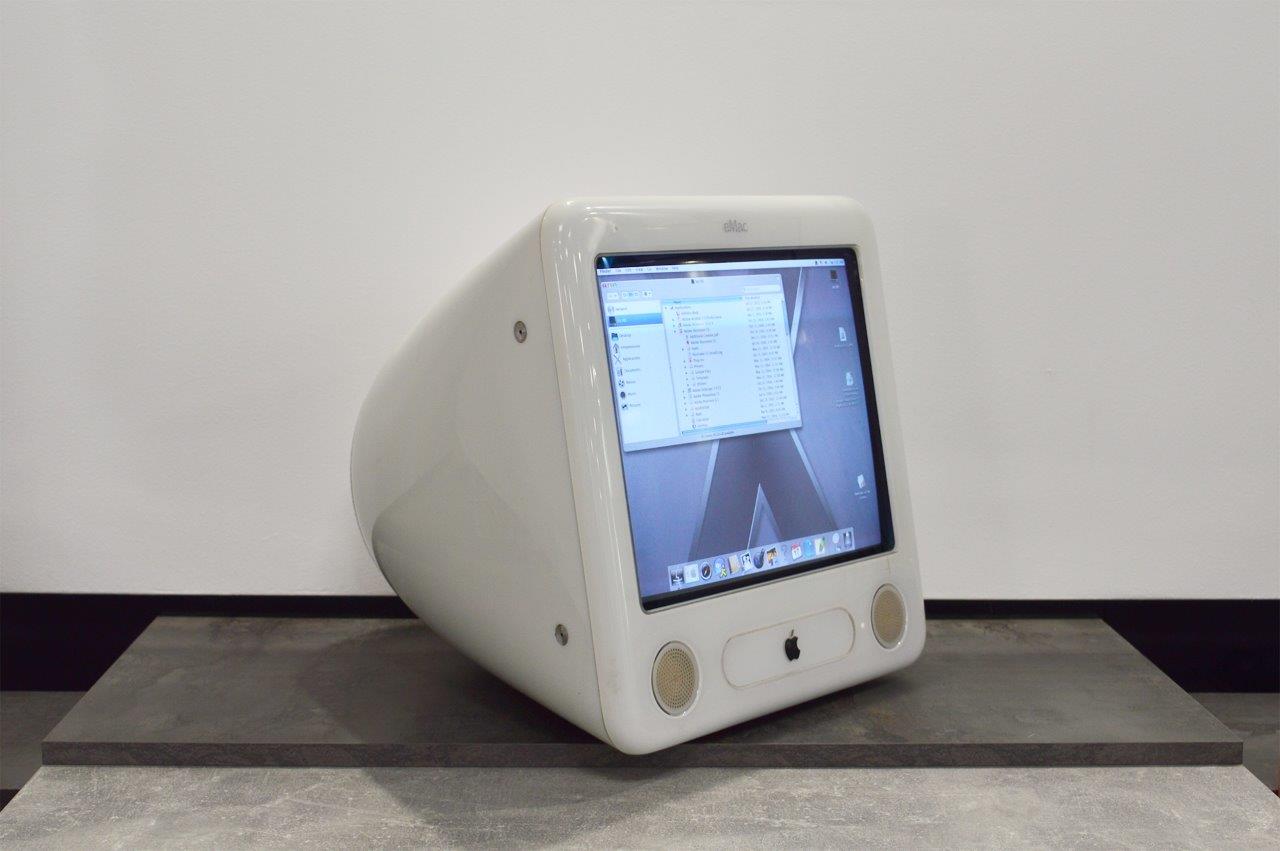Flyback transformer

There’s a type of electrical component called a flyback transformer, which was used in cathode ray tube displays, including Macs, until the mid-2000s.
I first came across this term in September 2013 when I was working as a Genius in Apple retail, attending training in Cupertino. At the time, the only Macs that included a flyback transformer that were still supported for on-site repairs where eMacs, the education-only version of the iMac that was ultimately discontinued in 2006, and which was the last CRT computer display Apple ever made. Because this machine could theoretically still be brought into an Apple store for service, we received training on how to safely disassemble and repair it.
I say “safely,” and in the context of other computers the focus of the training was preoccupied with safely handling the electrical components for their sake, so as not to fry them with static electricity from your fingers. In the case of the eMac and its flyback transformer, however, the concern was about the repairperson’s safety. As with other CRTs, if you mishandled the components and touched the flyback transformer, there was a risk it could discharge its store of electricity through your body and kill you.
Repairing a computer could kill you. I’d never considered this a possibility. I’d had very little exposure to CRT monitors, or repairing them for that matter, but I remember feeling at the time like this was something people should have been talking about.
What made this stranger was that its repair procedure was an inversion of the usual electrical grounding protocol—unlike other computers, which required the repairperson to be grounded to prevent static electricity from damaging circuitboards, being grounded actually increased the electrical discharge risk posed by the CRT and flyback transformer.
For our training, they actually had us open one up and go through a repair. We were cautioned during classroom training that this hands-on exercise was coming, and we all listened intently, taking notes. When the time came to disassemble the machine, I remember the delicacy—reverence—with which I handled the flyback transformer.
Only after the hands-on repair was complete, and the machine POSTed, did the instructor tell us that these computers had been dormant for months (years?), and that therefore the discharge risk of the flyback transformer was nil. I suppose I should have assumed as much, considering the liability that the largest company on the planet would be taking on by having hungover college kids take apart these eMacs, but it came as a surprise.
I think about the flyback transformer a lot. I’m not certain that specific component was the dangerous bit, but its incredible name garnered its own appreciation. This was likely a transparent ploy to get our attention focused on the proper procedures for disassembling Macs, but this particular phrase looms large in my personal history and recollection of that time.
Notes mentioning this note
There are no notes linking to this note.